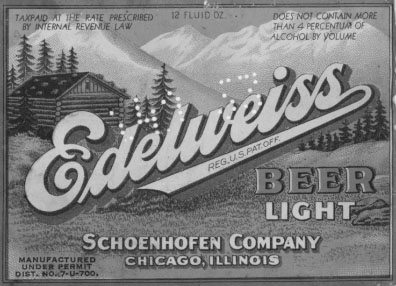Light Beer, a term that has varied meanings in different parts of the world. In some areas, light beer refers to a beer with fewer residual carbohydrates, whereas in other parts a light beer refers to a beer with lower alcohol than most “regular” beers. In the United States, a light beer is a style of beer that has a significantly lower amount of calories than a comparable full-calorie version. Because the alcohol content contributes the majority of calories in beer, light beers are almost always lower in alcohol than their comparable full-calorie, full-strength variants on a similar style. As a reference, alcohol contains 7 calories per gram, and carbohydrates contain 4 calories per gram. The US governmental regulations for beer, governed by the Alcohol and Tobacco Tax and Trade Bureau (TTB), are not identical to the Food and Drug Administration (FDA) regulations for light products. The FDA defines a light product in regard to calories, as a product that has at least 33% fewer calories than contained in a reference standard calorie product. The TTB defines a light beer as one with a meaningful decrease in calories compared with a reference, full-strength version. Most light beers meet the FDA definition, but many do not. The TTB mandates that beers labeled “light” must have a statement of average analysis on the container that includes the contents per serving for calories, fat, carbohydrates, and protein. Light beer in the United States has become the largest selling segment of the beer market.

Edelweiss was a popular brand for the Schoenhofen Company in Chicago, founded in 1860. This light beer label dates from 1933, the year brewing operations resumed following Prohibition. pike microbrewery museum, seattle, wa
There are four main methods of making light beer. The first method is the easiest and involves dilution of a regular-strength beer with water until the desired alcohol and calorie content are achieved for a light beer. The second method is to decrease the serving size so that the consumer package is small enough to contain significantly fewer calories than a comparable full-strength, full-size serving. As an example, a 12-oz serving may contain 150 calories, but a 6-oz bottle or can will contain 75 calories. The third method is to extend the mashing process so that the natural enzymes in barley break down as much of the carbohydrate material as possible into simple sugars. These sugars are then fermented by the yeast into alcohol and carbon dioxide. After dilution with water, a light beer is the result. The fourth method is to employ exogenous brewing enzymes into the mash or fermenting beer to break down most of the carbohydrates to simple sugars. The sugars are then fermented by the yeast to alcohol and carbon dioxide. After dilution with water, a light beer is the result.
There are many different styles of light beer, but the most famous is light American-style lager. The main commercial examples are Bud Light, Coors Light, and Miller Lite. Light beer had its origins in the 1940s, when the Coors Brewing Company introduced a beer called Coors Light that was lighter in body and calories than the company’s premium lager offering. This brand was discontinued at the start of World War II, only to be reintroduced in 1978. In 1967 the Rheingold Brewery brewed a beer aimed at the dieting public called Gablinger’s Diet Beer, invented by a chemist named Joseph Owades. The next brewery to launch a light beer was Meister Brau, who debuted Meister Brau Lite. Miller Brewery took over the Meister Brau franchise and reworked Meister Brau Lite into a new brand called Miller Lite in 1973. Through a successful advertising campaign famously offering the supposed attributes “Tastes great, less filling,” Miller Lite became the first nationally available light beer in the US marketplace. Coors Light was launched in 1978 in response to Miller Lite and Bud Light followed in 1982. By the late 1990s, Bud Light had become the largest beer brand sold in the United States. These three major brands of light beer appear to be very similar, but they do have unique differences. Although all three are light beers, Miller Lite is the lightest in regard to residual extract (carbohydrates) and Bud Light is the heaviest. Coors Light is in between. All three are lightly flavored and very dry, with each one exhibiting a hint of the unique house flavor of its respective proprietary yeast and brewing technique. All mass market light beers are made with large proportions of adjunct cereals replacing barley malt. Hop bitterness in these beers is barely perceptible, but many consumers regard them as refreshing.
By the late 1990s, an even lighter version of light beer emerged called low-carbohydrate light beer. “Low-carb” light beer is made with exogenous enzymes added to the mash so that virtually all of the carbohydrate is broken down to fermentable sugars. After dilution with water, a very light, low-carbohydrate beer is obtained. Low-carb light beer enjoyed a meteoric rise, but its popularity was short lived and most consumers returned to drinking regular light beer. “Low-carb” beer is now a relatively small part of the US beer market. Contrary to popular belief, the average difference in calories between light beer and similar standard beers is quite small, sometimes less than 20 calories per serving.
Most experts agree that the success of light beer in the US market is caused by a combination of factors, including a very light “non-beer” taste with little bitterness, a low caloric content, and, of course, effective marketing. American-style light lagers are very difficult to manufacture and distribute, but the recent global launch of American brands such as Coors Light will tell us in the near future whether American-style light beer can be successful around the world.
